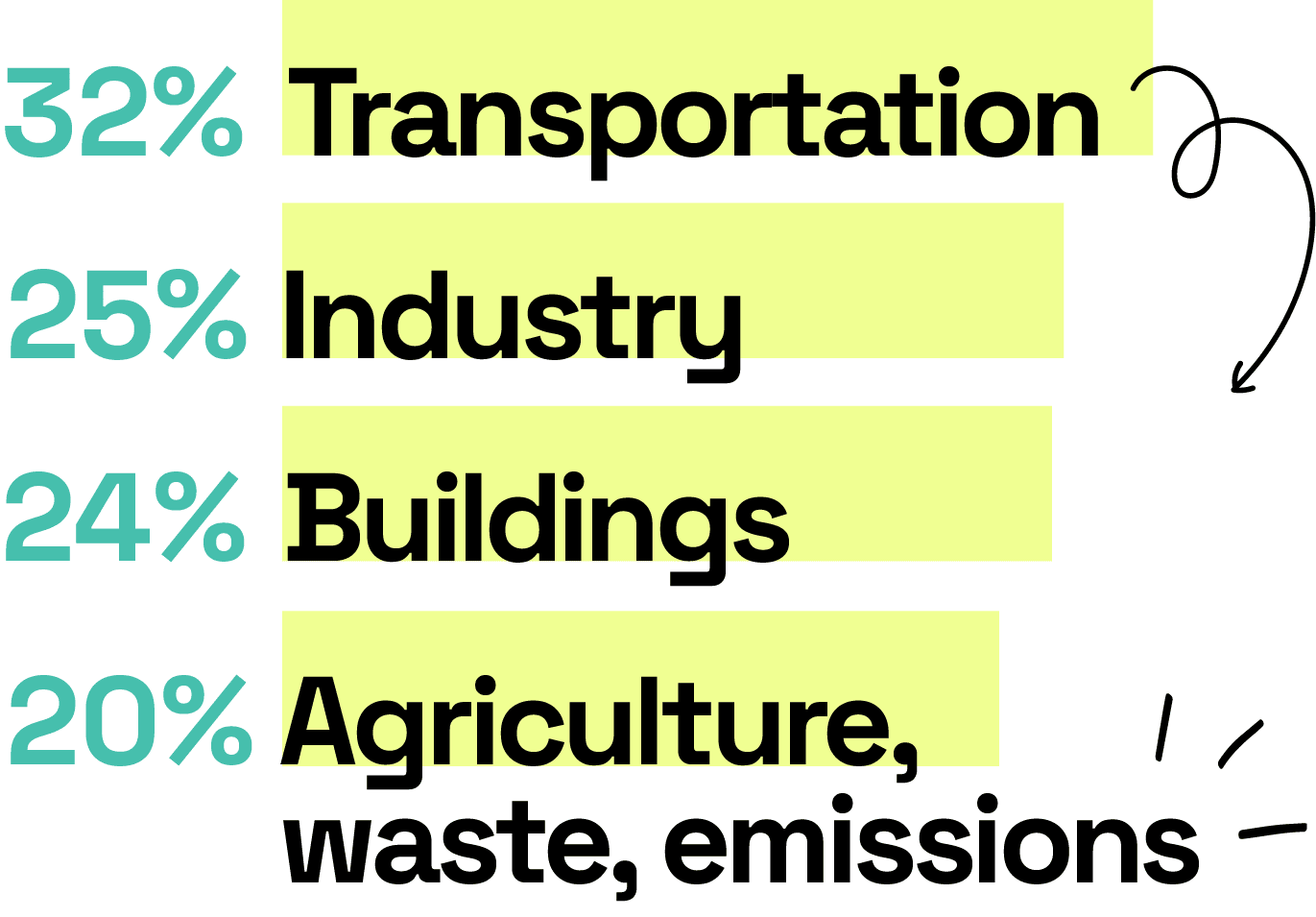In order to understand the importance of switching to a more climate-friendly and even climate-neutral company in the long term, it is first necessary to explain the impact of increased CO2 emissions:
The greenhouse effect
Our earth’s atmosphere consists of a colorful mixture of different substances, including greenhouse gases, which include CO2. When the light rays emitted by the sun hit the earth’s surface, part of them is reflected and sent back into space. The rest, converted into heat rays, is absorbed by the Earth’s atmosphere and stored by the greenhouse gases. Similar to the way heat accumulates under a glass dome. This process, described as the “greenhouse effect,” is not bad per se; on the contrary, thanks to the heat stored in this way, average temperatures of 15° degrees prevail on Earth, where without it there would be just -18° degrees to worry about. So as far as that goes, everything is fine. And also CO2 or carbon dioxide is nothing dangerous per se and even part of a natural process:
CO2 and the seasons
In spring, trees and plants absorb CO2 and use the greenhouse gas to bloom and flourish. In the fall, the leaves are then shed again, rotting and thus releasing the CO2 back into the earth’s atmosphere. So far so good. However, the process in spring can only process a limited amount of CO2, namely in something as much as would naturally occur in the air. However, due to industrialization, more and more CO2 is released into the earth’s atmosphere, leaving a significant surplus. This causes more heat to be stored and ultimately leads to global warming. This is because CO2 takes the longest of all greenhouse gases to decompose, namely around 100 years.
Catastrophic effects
In the meantime, it is known what effects global warming can have and already has. Besides more intense natural disasters such as monsoon rains, hurricanes or drought, also chronic respiratory diseases for us humans. In addition, warming is triggering other domino effects: Polar ice caps are melting and releasing the CO2 stored in them into the atmosphere, while melt water is causing sea levels to rise – to name just one example. So there is an urgent need for action. Because the whole world is all too aware of the real danger, the so-called Paris Climate Agreement committed countries to reducing greenhouse gas emissions. Switzerland is among the 55 countries that have signed up to the climate agreement. One of the many cornerstones of the agreement includes the role of civil society and the private sector. Thus, all are called upon to intensify their efforts to promote climate protection and to support measures to reduce emissions.

The climate and mobility
Switzerland itself has set itself the goal of zero greenhouse gas emissions by 2050. To achieve this, it is implementing a wide range of measures, including in the area of mobility the expansion of the charging infrastructure for electric cars, just as it has set itself the goal of bringing ever more efficient vehicles onto the market. And companies that rely on e-mobility are to receive financial subsidies. It is thus clear that in the coming years, more and more measures will be taken to make companies more climate-friendly or even climate-neutral.
With these circumstances in mind, more and more companies are already devoting themselves to a comprehensive environmental strategy that includes all areas of the company. Mobility is a not insignificant factor here, especially when one considers that traffic in Switzerland is responsible for around one third of emissions (see graphic on the left).
A mission that concerns everyone
What is certain is that even small efforts to reduce CO2 emissions can make a difference. Motion detectors for office lights, for example, or consistently turning off screens in the evening. And in the area of corporate mobility, e-cars or e-fleets offer an opportunity to save a high level of CO2 emissions. Be it sharing e-cars or e-bikes, thanks to which fewer team members drive their own cars, or the conversion of company mobility to an e-fleet. They are all aware of one thing: the sooner they convert the company to climate neutrality, the more time they will have to adapt the company gently and step by step.
Are you also planning to switch to e-mobility? Calculate the benefits of individual company vehicles online with the e-mobility calculator or get free advice.
A Climate: The most important facts in a nutshell (admin.ch)
Causes of greenhouse gas emissions in Switzerland:
- 32 % by transport (excluding international air and sea transport).
- 24 % by buildings
- 25 % by industry
- 20 % by agriculture and waste treatment as well as synthetic gas emissions.

